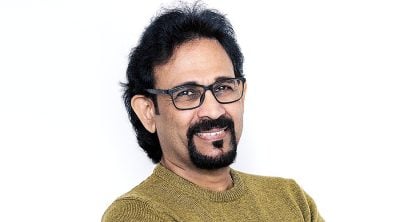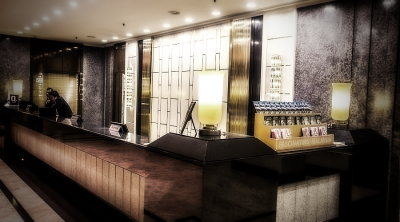
As we approach World Rivers Day on September 29, it’s essential to reflect on the lifeblood these waterways represent for our planet.
Rivers are not just geographical features; they are crucial for sustaining ecosystems, providing fresh water, and supporting human communities.
Yet, the sad reality is that many rivers are disappearing, polluted, and under severe threat from human development.
The importance of rivers
Rivers are vital for various reasons. They provide fresh water that is far cheaper and more accessible than desalinated water from the seas.
For instance, in Malaysia, the Bukit Jalil estate once boasted five rivers; today, none remain. They were buried and covered, under the guise of development.
This loss underscores a significant trend: as development prioritises urbanisation over natural waterways, we sacrifice our essential water sources.
Globally, rivers are facing unprecedented pressures. According to the World Resources Institute, approximately 60 per cent of the world’s rivers are now under threat from pollution, over-extraction, and climate change.
The Ganges in India, once considered sacred, is now one of the most polluted rivers globally, with toxic waste and sewage compromising its water quality and the health of those who depend on it.
Similarly, the Yangtze River in China, which is the longest river in Asia, is grappling with pollution levels that have decimated local fish populations and contaminated drinking water sources.
The Mekong River faces significant pollution challenges due to industrial waste, agricultural runoff, and urban development, impacting water quality and local ecosystems.
The Klang River in Malaysia similarly suffers from high pollution levels, exacerbated by illegal dumping and inadequate waste management, which affects both biodiversity and public health.
The global water crisis
The scarcity of freshwater is becoming a critical issue, with the potential to spark conflicts akin to those fuelled by oil.
In fact, disputes over water resources are already heating up in regions like the India-China border, where water rights have become a source of tension.
UN data suggests that over 2 billion people live in countries facing high water stress, and this number is expected to rise as climate change exacerbates droughts and alters precipitation patterns.
Countries like India and Pakistan are witnessing severe water shortages that threaten agriculture, industry, and livelihoods.
Many of our rivers are disappearing, polluted, and under severe threat from human development..
Here are ten rivers that have been significantly impacted or wiped out due to river burial and similar activities:
1. The Aral Sea Basin (Central Asia)
2. The Mississippi River Delta (United States)
3. The Yangtze River Floodplain (China)
4. The Tigris-Euphrates River Basin (Iraq, Syria, Turkey)
5. The Colorado River Delta (Mexico, United States)
6. The Nile Delta (Egypt)
7. The Indus River Delta (Pakistan)
8. The Amazon River Basin (Brazil)
9. The Ganges River Delta (India, Bangladesh)
10. The Danube Delta (Romania, Ukraine)
These regions have suffered due to damming, water diversion, and urban development, leading to habitat loss and ecological degradation.
Learning from success stories
However, all is not lost. There are successful examples of river restoration and management.
Singapore, for instance, has implemented comprehensive strategies to rehabilitate its rivers, turning the once-polluted Singapore River into a clean waterway that supports local wildlife and enhances urban living.
1. Singapore: The Singapore River was transformed through stringent regulations and clean-up efforts, improving water quality and revitalising the surrounding areas.
2. Thames River, UK: Extensive clean-up initiatives and pollution control measures have led to significant improvements in water quality, supporting a resurgence of wildlife.
3. Hudson River, US: After decades of pollution, concerted restoration efforts, including Superfund clean-up projects, have revitalised the river, enabled recreational activities and improved ecosystem health.
These examples highlight the effectiveness of targeted interventions and community engagement in river restoration and preservation efforts globally.
This transformation involved significant investments in water treatment technologies, public awareness campaigns, and strict pollution controls.
Governments around the world can take inspiration from Singapore by:
1. Implementing stricter pollution controls: Enforcing regulations to limit industrial discharge and agricultural runoff can significantly improve water quality.
2. Investing in green infrastructure: Building wetlands, rain gardens, and permeable pavements can help manage stormwater and reduce runoff pollution.
3. Promoting community engagement: Involving local communities in river clean-up initiatives and educational programs fosters stewardship and awareness.
4. Creating protected areas: Designating riparian zones and establishing protected habitats can help preserve biodiversity and restore ecosystems.
As we celebrate World Rivers Day, let us recognise the vital role rivers play in our lives.
They are essential for water supply, biodiversity, and climate resilience.
It is imperative that we do not bury our rivers under the guise of development. Instead, we must strive to restore and protect these vital waterways for future generations.
The time to act is now—our rivers, and the communities that depend on them, are counting on us.
We in Malaysia are no exception. We must take serious moves and changes.
We cannot be spending money on JAKIM and ignoring our rivers. We must spend more to restore the rivers.
The restoration programs must be done in an organised and structured manner. Klang river has been always in the news not for the right reasons.
When will our enforcement agencies wake up from their slumber, Sungai Kim Kim, Sungai Kempas, Sungai Buluh, Sungai Tampoi are the poorest of the poor which gets polluted once in three months. This is shocking and truly nauseating.
The people are suffering. There is no call by the enforcement agencies to stop this.
What must we do to ensure no such practices occur one more time? Do we need a national task force? Do we need more education? Do we need more laws? What do we need, I wonder!

(Ravindran Raman Kutty is an active social worker.)
ADVERTISEMENT
ADVERTISEMENT








































